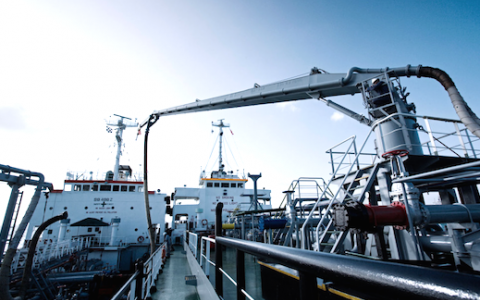Three reasons to reconsider digital bunker procurement

Danny Soos, the CEO and founder of new bunker broking platform OilFront, suggests how we go about sourcing fuel for our ships is due to undergo massive change very soon.
Bunkering hasn’t changed much in the last 35 years. The last major shift in the way business was done was with the rise of the independent suppliers. The internet and other technologies have so far failed to change the way bunkers are bought and sold. Why is now the time to get smart about buying bunkers?
Companies adopting smart strategies have a competitive advantage
Most shipping companies rely on heuristics about where to lift bunkers – stop at major hubs, at load or discharge ports. In the past it was time consuming and nearly impossible to get all the prices to evaluate all of the options. Simple rules of thumb made bunker planning manageable.
Today some smart shipping companies are enjoying a 2-3% saving on total bunker costs. One study showed that by using technology to take a data-driven approach to bunker procurement they saved $25m per annum across a fleet of 269 vessels. With bunkers typically representing more than 60% of a vessel’s operating costs a good bunker strategy can make a big difference in today’s highly competitive, low margin environment.
Technology enables us to make sense of the data allowing us to make considered decisions about which ports to bunker in, when to enter the market and which suppliers to work with. It is now possible to compare all of the options and do better than the rule of thumb method. A data-driven approach can save the industry $4bn a year – I’ll write more about how in my next article.
In many ways it doesn’t matter to a shipping company if bunker prices double – as long as all of the competition also pays the higher prices and freight rates increase accordingly. In fact, if you have just invested in a fleet of fuel efficient ships you may very well hope bunker prices do go up as it will increase your competitive advantage. However, shipping companies which take a smart approach to bunker procurement are paying relatively lower prices and we expect this advantage to increase.
IMO 2020 is a huge opportunity for shipping companies with a data driven approach to bunker procurement
In 2020 the bunker market will go through the biggest shake-up in memory – this uncertainty will create an opportunity for savvy operators. There are going to be an array of new fuels and compatibility issues – bunker planning is going to be much more tricky. It is already a full time job to keep on top of who supplies what, where and at what price. The mental map that bunker buyers use to navigate the market today is going to change drastically.
Technology is going to be crucial in helping bunker buyers make informed decisions and show compliance in the new world. The data-driven advantage will only increase as we switch to more expensive low sulphur fuels, the number of different grades increase and there is more uncertainty in the market. Regulatory change always creates winners and losers.
Streamline operations and lower costs
Technology has unlocked a huge amount of value in our personal lives by giving us the ability to shop the market. Isn’t it time we developed the ability to do the same in the workplace? As a consumer you can easily shop the market to find the most economic product or service – whether it is a flight, insurance or a mortgage. Shipping companies frequently order bunkers without realising that there is a better option available. We recently worked with a client who was able to save $20 per metric tonne by calling ‘bunkers only’ at a port en-route. They saved $30,000 on a single bunker delivery by shopping the market. Today in the bunker market there is no good way to find out what you don’t know.
After assessing the market, as a consumer you can order just about anything online and you will get instant confirmation, real time updates and a delivery window. Why is it that you get a better customer experience and more information buying a $15 package online than you do when you order a $1.5m bunker stem? I’d argue it’s about time the bunker market catches up – real time updates, clear audit trail, documents in one place, benchmarking and reporting. In order to make this possible we need to move past using email and Excel to manage operations.
There is a huge amount of value to be unlocked by embracing technology in bunkering. It will be difficult for all but the biggest shipping companies to do this in house. Outsourcing will give the shipping company access to the latest technology without the associated IT development costs whilst providing data and purchasing economies of scale.
